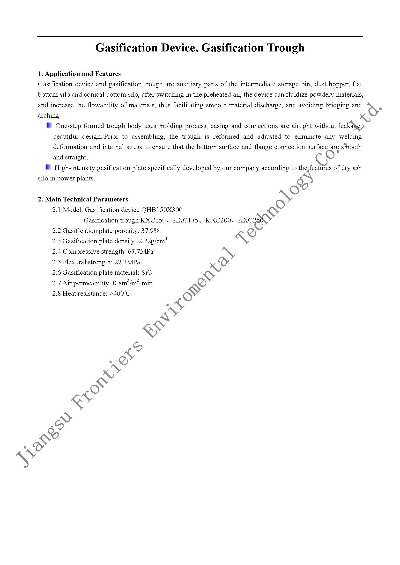The Evolution of Eco-Textiles:Technological Requirements and Case Studies
Eco-Textiles have been increasingly popular in recent years due to their eco-friendly and sustainable nature. The development of eco-textiles has required technological advancements, including the use of renewable materials, innovative dyeing processes, and advanced printing techniques. This paper reviews the technological requirements for developing eco-textiles and provides case studies of successful eco-textile projects. The paper highlights the importance of incorporating eco-friendly materials such as organic cotton, bamboo, and recycled polyester into textile production processes. Additionally, the paper discusses the need for developing new dyeing and printing technologies that reduce waste and minimize environmental impact. Case studies of successful eco-textile projects demonstrate the potential of these technologies to create high-quality products that meet consumer demand while also reducing environmental impact. Overall, this paper provides a comprehensive overview of the technological requirements for developing eco-textiles and highlights the importance of pursuing sustainable practices in the textile industry.
Eco-textiles, the fabrics that are designed to be sustainable, environmentally friendly, and ethically produced, have become increasingly popular in recent years. As consumers demand more from their clothing choices, eco-friendly textiles have emerged as a key trend. In this article, we will explore the technological requirements for developing eco-textiles and provide case studies to illustrate the practical application of these technologies.

The first step in creating eco-textiles is to source materials that are sustainably harvested or recycled. For example, bamboo is a popular choice for eco-textiles due to its rapid growth rate and minimal environmental impact. To produce bamboo fibers, farmers must plant and harvest the bamboo plants themselves, which requires minimal chemical inputs and minimal water use compared to traditional agriculture methods.
Once bamboo has been sourced, it needs to be processed into yarn. This involves removing impurities and converting the bamboo fibers into yarn through various techniques such as carding, twisting, and drawing. The process of carding involves passing the bamboo fibers through a series of rollers to remove dust and other impurities while also increasing the fiber's strength and durability. Twisting involves winding the yarn around a spindle to create a tighter structure that enhances the fabric's strength and durability. Drawing involves stretching the yarn over a mangle to increase its diameter and improve its elasticity.
Once the yarn is ready, it can be woven into fabric using various techniques such as warp knitting, back knitting, and front knitting. Warp knitting involves laying out the warp threads on a loom and then weaving them together to create the fabric's warp. Back knitting involves placing the warp threads on a loom and then weaving them together to create the fabric's back. Front knitting involves placing the warp threads on a loom and then weaving them together to create the fabric's front.
In addition to these techniques, there are several other technologies that play a crucial role in the production of eco-textiles. For example, dyeing processes must be eco-friendly and non-toxic to ensure that the fabric does not harm the environment. Some eco-friendly dyes include natural pigments such as organic inks and biodegradable dyes made from plant extracts.
Another important technology is printing, which allows for the creation of intricate patterns and designs without the use of harsh chemicals. Screen printing, for example, involves placing a screen with a pattern onto the fabric and then applying ink through a stencil onto the fabric. This technique produces high-quality prints that are both visually appealing and environmentally friendly.
Finally, finishing techniques must be carefully selected to ensure that the fabric meets all necessary standards for sustainability. For example, some eco-textiles may require additional treatments such as antimicrobial agents or flame retardants to prevent damage from bacteria or fire. Other finishing techniques may involve adding protective coatings or waxes to the fabric to enhance its durability and appearance.
In conclusion, creating eco-textiles requires careful consideration of various technological requirements. From sourcing sustainable materials to selecting appropriate processing techniques, each step must be done with care to ensure that the fabric meets all necessary standards for sustainability. By following these guidelines, we can help to promote eco-friendly fashion trends while also preserving our planet for future generations.
随着环保意识的日益增强,生态纺织品技术要求越来越受到重视,本文将围绕生态纺织品技术要求展开讨论,并通过案例分析进一步阐述其重要性。
生态纺织品技术要求概述
材料可持续性
生态纺织品应采用可降解、可再生或可回收的材料。
无毒无害
纺织品应符合无毒无害的标准,不含有害物质,对人体无害。
环保设计
纺织品应符合环保设计理念,减少环境污染。
抗菌防霉性能
纺织品应具备抗菌防霉性能,有效防止细菌和霉菌的生长。

案例分析
以下是一个生态纺织品技术的案例分析,以供参考:
某品牌生态纺织品技术要求
材料选择
该品牌选择使用可降解、可再生或可回收的材料制作纺织品,使用有机棉、竹纤维等环保材料。
无毒无害标准实现
该品牌在生产过程中严格控制有害物质的排放,确保产品符合无毒无害标准,该品牌还采用了环保染料和工艺,减少了对环境的污染。
环保设计理念体现
该品牌在产品设计过程中注重环保理念,采用绿色材料和工艺,打造出既美观又环保的产品,该品牌还积极推广环保生活方式,提高消费者对环保产品的认知度。
生态纺织品技术要求的具体要求
材料选择与检测标准
材料应符合国家相关标准和行业标准,同时应进行检测,确保其符合生态纺织品技术要求,应检测材料的生物降解性、可回收性等指标。
生产工艺与流程控制
生产工艺与流程应符合环保理念,采用环保工艺和设备,减少对环境的污染,应严格控制生产过程中的有害物质排放,确保产品符合国家相关标准和行业标准。
抗菌防霉性能检测方法与标准
抗菌防霉性能应通过实验室检测和现场测试相结合的方式进行评估,实验室检测应采用专业的检测仪器和方法,确保结果的准确性,现场测试应选择合适的测试场地和测试对象,确保测试结果的可靠性,抗菌防霉性能应符合国家相关标准和行业标准,可采用抗菌剂、防霉剂等添加剂,提高纺织品的抗菌防霉性能。
生态纺织品技术要求是保障纺织品环保、健康、安全的重要手段,在生产过程中,应严格遵循生态纺织品技术要求,采用环保材料和工艺,提高产品品质和消费者认可度,还应加强宣传和教育,提高消费者对生态纺织品的认识和认知度。
Articles related to the knowledge points of this article:
The Size of Textiles:A Guide for Your Next Shopping Experience
The Navigating Challenges of Applying for Jobs at Hangzhou Jiexi Ju Textiles



